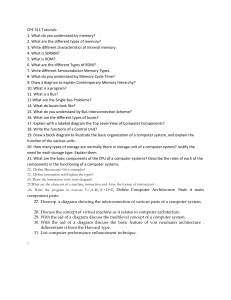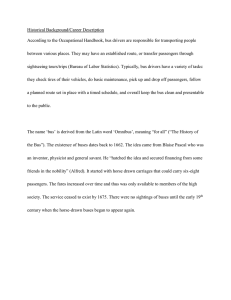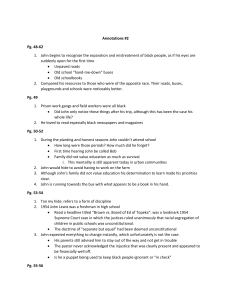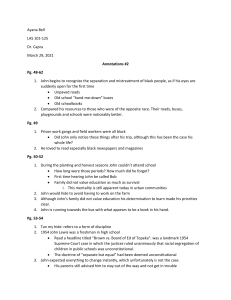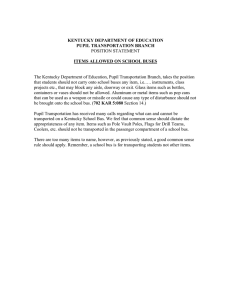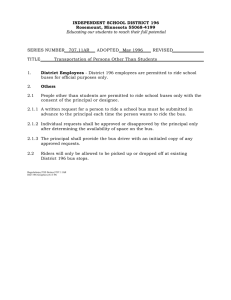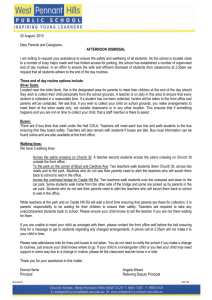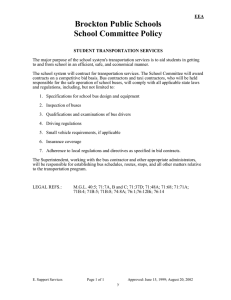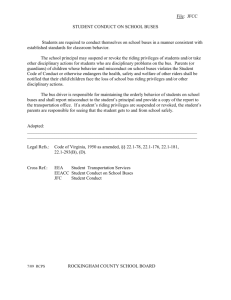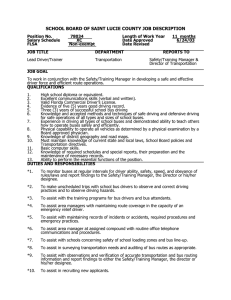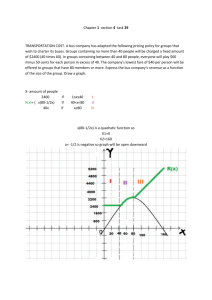Background
advertisement
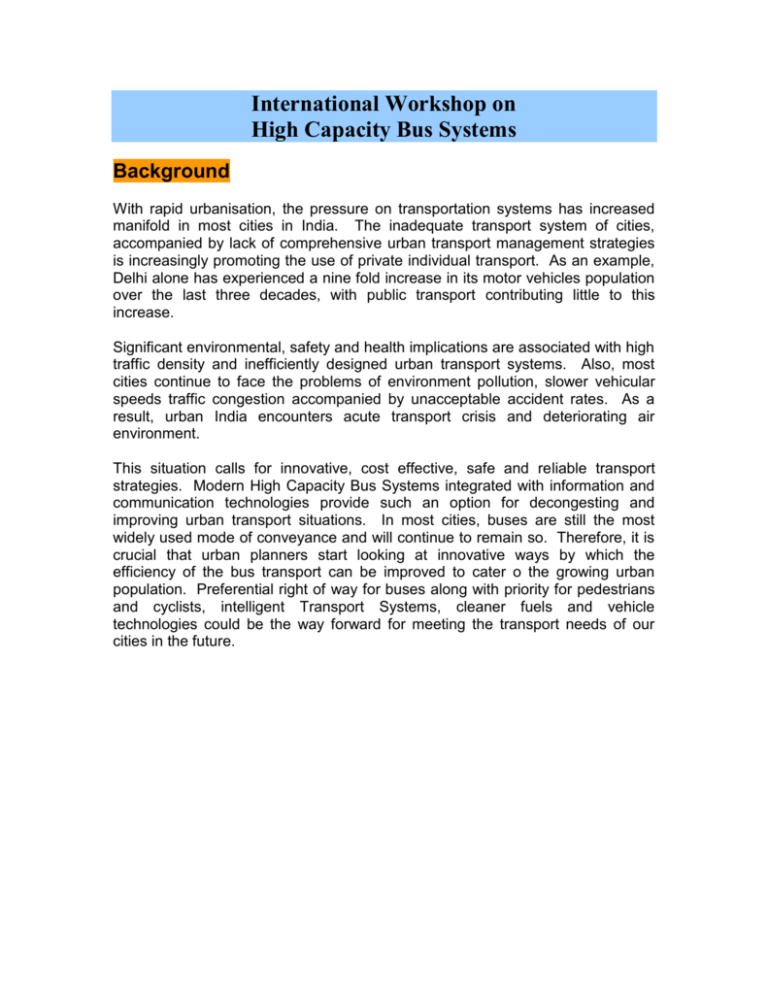
International Workshop on High Capacity Bus Systems Background With rapid urbanisation, the pressure on transportation systems has increased manifold in most cities in India. The inadequate transport system of cities, accompanied by lack of comprehensive urban transport management strategies is increasingly promoting the use of private individual transport. As an example, Delhi alone has experienced a nine fold increase in its motor vehicles population over the last three decades, with public transport contributing little to this increase. Significant environmental, safety and health implications are associated with high traffic density and inefficiently designed urban transport systems. Also, most cities continue to face the problems of environment pollution, slower vehicular speeds traffic congestion accompanied by unacceptable accident rates. As a result, urban India encounters acute transport crisis and deteriorating air environment. This situation calls for innovative, cost effective, safe and reliable transport strategies. Modern High Capacity Bus Systems integrated with information and communication technologies provide such an option for decongesting and improving urban transport situations. In most cities, buses are still the most widely used mode of conveyance and will continue to remain so. Therefore, it is crucial that urban planners start looking at innovative ways by which the efficiency of the bus transport can be improved to cater o the growing urban population. Preferential right of way for buses along with priority for pedestrians and cyclists, intelligent Transport Systems, cleaner fuels and vehicle technologies could be the way forward for meeting the transport needs of our cities in the future.




